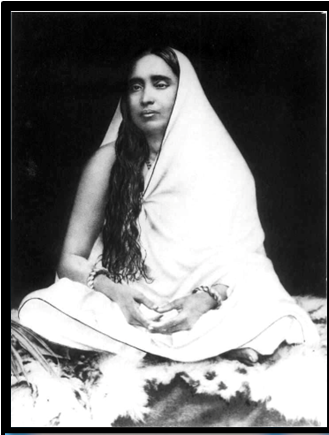THE SUFFERING THAT LED SOME WOMEN TO BECOME SAINTS
Syllabus:
GS 2:
- Issues relating to development and management of Social Sector/Services relating to Health, Education, Human Resources.
Focus:
- March 8 is designated as International Women’s Day.
Source:- Angusman
March 8, designated as International Women’s Day, prompts a reflection on the status of women within various cultural and religious frameworks, including Sanatana Dharma. Despite legal advancements supporting women’s rights in India, societal norms often overshadow the individual identities of Hindu women, relegating them to roles defined by their relationships with men. This editorial delves into how historical challenges have paved the way for some women to seek solace and identity in spirituality, eventually leading them to sainthood.
| International Women’s Day
· International Women’s Day is observed annually on March 8, celebrating women’s achievements and advocating for equality and gender parity. · The day was initiated in 1911 by Clara Zetkin, linked to the labor movement in Europe and North America. · The UN firstly recognized International Women’s Day in 1975. · The 2024 theme, “Inspire inclusion,” underscores the significance of valuing and respecting women’s diverse backgrounds, including their origins, economic status, and political beliefs. |
Societal Challenges Faced by Hindu Women
- Hindu women traditionally struggle with societal expectations, where their identities are often merged with their husbands’.
- Widows, divorcees, single women, and childless wives, particularly those without sons, face significant stigma.
- The only women traditionally accorded respect independently of their marital status are the elderly and renunciates.
Religious Path as an Escape
- For many Hindu women, religion offered an escape from the confines of a patriarchal society.
- The path to becoming saints was one of the few avenues available for women seeking to forge an individual identity or escape oppression.
Influential Women Saints and Their Legacies
Andal (9th Century)
- Andal is celebrated for her unwavering devotion to Lord Vishnu, culminating in her merging with his idol at the Srirangam temple.
- Her works, the Tiruppavai and Nachiar Tirumozhi, significantly influenced Ramanuja, a pivotal figure in the casteless Srivaishnava movement.
Karaikkal Ammaiyar (6th Century)
- Known as “the old lady of Karaikkal,” she is one of the earliest-known Indian woman saints, part of the Tamil Shaiva Nayanmar saints.
- Legend has it that her devotion to Shiva led her to forsake her beauty and youth, embracing a form that reflected her spiritual devotion over worldly ties.
Patterns of Suffering and Spiritual Ascent
- Women saints like Avvaiyar, Akka Mahadevi (12th Century), and Lal Ded (14th Century) sought spirituality not just for enlightenment but as a refuge from the harsh realities of their domestic lives.
- Their stories of ill-treatment and subsequent rejection of societal norms underline a recurring theme of turning to spirituality as both a protest and a sanctuary.
Government Initiatives and Societal Changes
- The Indian government has launched several schemes aimed at empowering women and ensuring their welfare, such as the Beti Bachao, Beti Padhao Yojana for promoting girl child education and protection, and the Mahila-E-Haat platform for supporting women entrepreneurs.
- Despite these efforts, the deep-rooted societal biases and the challenges faced by women in asserting their identities independently of their marital status highlight the need for continued advocacy and reform.
The Influence of Women Saints on Social Reforms
- The devotion and determination of these women saints have not only contributed to the richness of India’s spiritual heritage but have also challenged and inspired social reforms.
- Their lives and teachings continue to influence contemporary movements and discussions around gender, spirituality, and societal norms.
Towards a More Inclusive Future
- The narratives of Hindu women saints, transcending centuries of societal constraints, underscore the potent blend of resilience, faith, and the quest for identity amidst adversity.
- As society progresses, recognizing and honoring the contributions of these women can inspire continued efforts towards gender equality and the empowerment of women across all spheres of life.
- The legacy of these saints serves as a reminder of the power of faith in overcoming societal limitations, advocating for a future where women’s identities and contributions are celebrated and respected in their own right.
In conclusion, the journey of Hindu women saints from historical times to the present day reflects a broader narrative of struggle, faith, and empowerment. Their stories, marked by a quest for spiritual fulfillment and individual identity against the backdrop of societal challenges, continue to inspire and inform the path toward gender equality and the empowerment of women in India and beyond.
Source:
https://www.newindianexpress.com/opinions/2024/Mar/03/the-suffering-that-led-some-women-to-become-saints#:~:text=Marathi%20women%20saints%20like%2013th,whole%20life%20as%20a%20servant.
Mains Practice Question:
“Examine the role of women’s movements in India in shaping the discourse on gender equality and women’s rights. Assess their impact on policy changes and societal attitudes towards women.”




